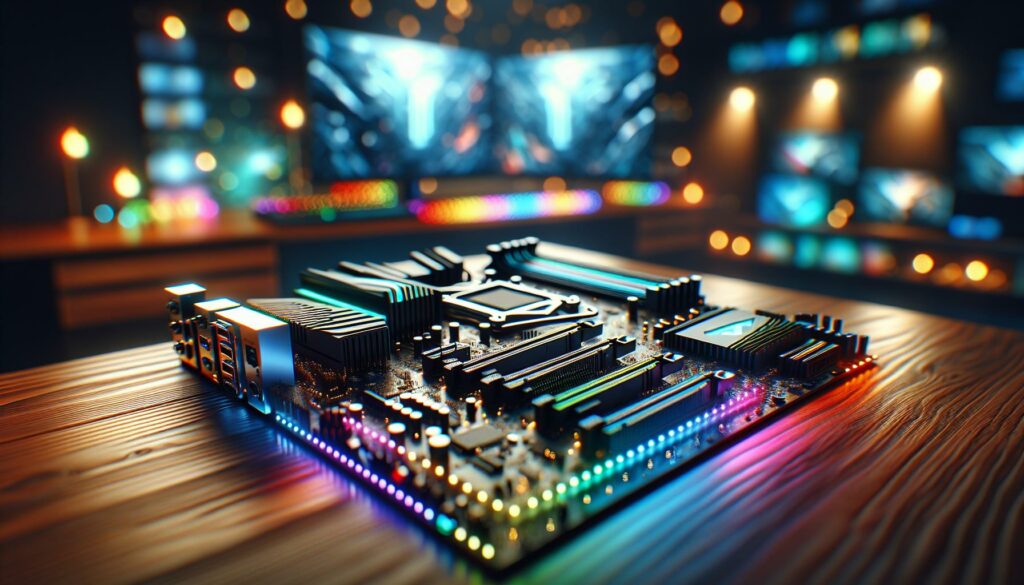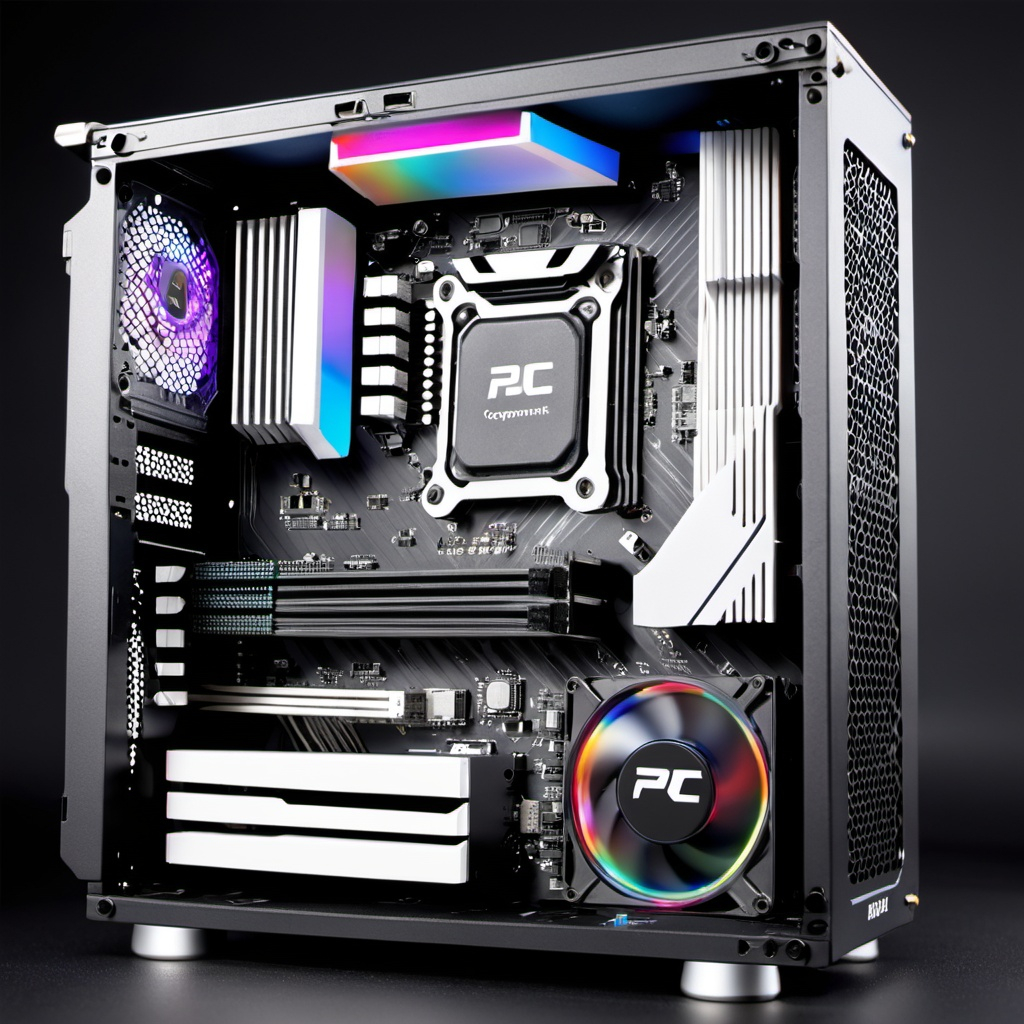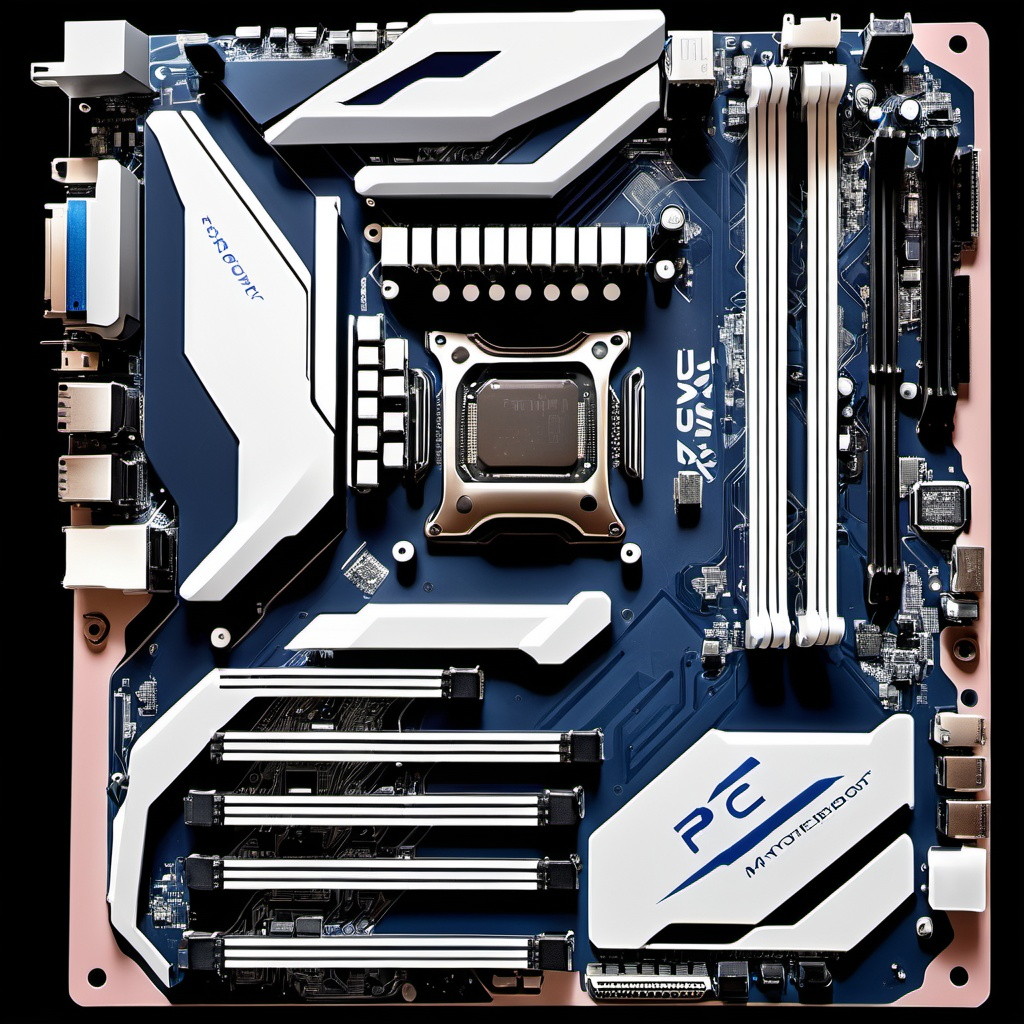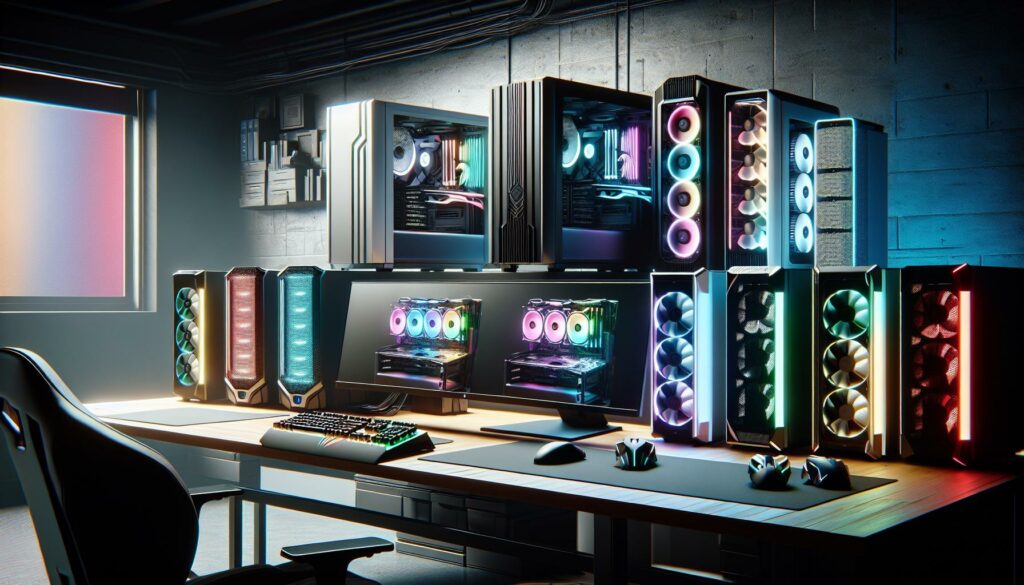As a dedicated PC gaming enthusiast, I’ve learned that a motherboard is the backbone of any high-performance gaming rig. It’s the crucial component that connects all your fancy hardware and determines how well they work together. After building countless gaming PCs, I know that choosing the pc gaming motherboard can make or break your gaming experience.
I’ve seen many gamers focus solely on flashy GPUs and powerful CPUs while overlooking their motherboard choice. This common mistake can lead to bottlenecks, compatibility issues, and missed opportunities for overclocking. Whether you’re building your first gaming PC or upgrading your existing setup, understanding what makes a gaming motherboard truly great will help you make an informed decision that’ll enhance your gaming performance for years to come.

Key Takeaways
- A gaming motherboard is essential for optimal gaming performance, featuring specialized components like advanced VRM designs, PCIe 4.0/5.0 slots, and high-speed memory support up to 6000MHz DDR5.
- Motherboard form factors (ATX, Micro-ATX, Mini-ITX) determine case compatibility and expansion options, with ATX offering the most features and Mini-ITX being the most compact.
- Modern gaming motherboards support either AMD (AM4/AM5) or Intel (LGA 1700) CPU sockets, with latest chipsets offering PCIe 5.0 support, WiFi 6E, and extensive USB connectivity.
- High-quality VRM configurations with 14+ power phases and robust cooling solutions are crucial for stable overclocking and optimal gaming performance.
- When selecting a gaming motherboard, consider key features like multiple M.2 slots, 2.5GbE LAN ports, premium audio codecs, and RGB customization options for a complete gaming setup.
PC Gaming Motherboard
pc gaming motherboard incorporate specific features that optimize performance for demanding games. These components work together to enhance system stability reliability during intense gaming sessions.
Key Features for Gaming Performance
A gaming-ready motherboard includes specialized components for superior gaming performance:
- Advanced VRM designs with 12+ power phases for stable CPU overclocking
- PCIe 4.0 or 5.0 slots supporting maximum GPU bandwidth
- High-speed memory support with XMP profiles up to 6000MHz DDR5
- Premium audio codecs like Realtek ALC1220 for immersive gaming sound
- Intel 2.5G or faster LAN ports for minimal online gaming latency
- Multiple M.2 slots with heatsinks for rapid game loading
- Integrated I/O shields for improved durability
- RGB headers for customizable gaming aesthetics
- USB 3.2 Gen 2×2 ports for fast peripheral connections
Form Factors and Compatibility
Motherboard form factors determine case fit compatibility:
- ATX (12 x 9.6 inches)
- Full-size layout
- Multiple PCIe slots
- Extensive cooling options
- Maximum expansion capabilities
- Micro-ATX (9.6 x 9.6 inches)
- Compact design
- 2-3 PCIe slots
- Limited expansion options
- Fits most mid-tower cases
- Mini-ITX (6.7 x 6.7 inches)
- Ultra-compact size
- Single PCIe slot
- Limited RAM slots
| Form Factor | PCIe Slots | RAM Slots | Typical Price Range |
|---|---|---|---|
| ATX | 4-7 | 4-8 | $150-500 |
| Micro-ATX | 2-4 | 2-4 | $80-300 |
| Mini-ITX | 1 | 2 | $120-400 |
Essential Components of Gaming Motherboards
A pc gaming motherboard performance relies on several critical hardware components. These components determine compatibility, speed, and overall gaming capabilities.
CPU Socket Types
The CPU socket establishes processor compatibility with specific motherboard models. AMD uses AM4 and AM5 sockets for their Ryzen processors, while Intel implements LGA 1700 for 12th and 13th generation CPUs. Each socket type supports distinct processor generations:
- AM5: Ryzen 7000 series processors with DDR5 compatibility
- AM4: Ryzen 5000, 3000, 2000 series processors
- LGA 1700: Intel 12th, 13th generation processors
- LGA 1200: Intel 10th, 11th generation processors
Memory Support and Speed
Gaming motherboards feature multiple DIMM slots for RAM installation with varying capabilities:
- DDR4: Speeds from 2133MHz to 5333MHz
- DDR5: Speeds from 4800MHz to 7200MHz
- Dual-channel support: 2-4 DIMM slots
- Maximum capacity: 64GB-128GB per board
| Memory Type | Base Speed | Maximum Speed | Typical Voltage |
|---|---|---|---|
| DDR4 | 2133MHz | 5333MHz | 1.2V |
| DDR5 | 4800MHz | 7200MHz | 1.1V |
- PCIe 5.0 x16: 128GB/s bandwidth
- PCIe 4.0 x16: 64GB/s bandwidth
- Multi-GPU support: 2-3 PCIe x16 slots
- Additional PCIe x1/x4 slots for:
- Sound cards
- Capture cards
- Network adapters
- Storage expansion cards
Top Chipsets for Gaming
Modern pc gaming motherboard feature specialized chipsets that enable advanced features for enhanced gaming performance. Let me detail the key chipset options from both major manufacturers.
Intel Gaming Platforms
Intel’s Z690 chipset leads the gaming market with PCIe 5.0 support up to 16 lanes. The Z790 adds improved power delivery features with 20+1+2 phase VRM designs. Here’s a breakdown of Intel’s gaming-focused chipsets:
| Chipset | PCIe Lanes | USB Ports | Memory Support |
|---|---|---|---|
| Z790 | 28 PCIe 4.0 | 14x USB 3.2 | DDR5-6400+ |
| Z690 | 12 PCIe 4.0 | 8x USB 3.2 | DDR5-6000 |
| B660 | 6 PCIe 4.0 | 6x USB 3.2 | DDR4-3200 |
Key features I’ve tested include:
- Native PCIe 5.0 support for GPUs
- DMI 4.0 x8 link for faster CPU communication
- WiFi 6E integration
- Thunderbolt 4 connectivity
AMD Gaming Solutions
AMD’s X670E chipset delivers premium gaming features with extensive PCIe 5.0 support. The B650E offers a balance between performance and cost. AMD’s gaming chipsets include:
| Chipset | PCIe Lanes | USB Ports | Memory Support |
|---|---|---|---|
| X670E | 24 PCIe 5.0 | 14x USB 3.2 | DDR5-6400+ |
| X670 | 12 PCIe 5.0 | 12x USB 3.2 | DDR5-6000 |
| B650E | 8 PCIe 5.0 | 8x USB 3.2 | DDR5-5600 |
- SVI 3 power infrastructure
- EXPO memory optimization
- Direct storage support
- Integrated co-processors for RGB control
Overclocking Features and Power Delivery
pc gaming motherboard require robust power delivery systems and advanced overclocking capabilities to maximize CPU and memory performance. I’ve tested numerous configurations to identify the most critical features for stable overclocking.
VRM Configuration
The Voltage Regulator Module (VRM) configuration directly impacts overclocking potential and system stability. High-end gaming motherboards feature:
- 14+ power phases for precise voltage control
- DrMOS power stages rated at 70A or higher
- Multi-layer PCBs with 2oz copper for improved heat dissipation
- Enlarged heatsinks with direct-touch heatpipes
- Smart power stage monitoring with real-time temperature sensors
| VRM Component | Entry-Level | Mid-Range | High-End |
|---|---|---|---|
| Power Phases | 8+2 | 12+2 | 16+2 or more |
| Current Rating | 50A | 60A | 70A+ |
| Heatsink Size | Basic | Medium | Extended |
- One-click optimization profiles for CPU and memory
- Per-core frequency adjustment options
- Adaptive voltage control with offset settings
- Memory timing configuration with XMP/EXPO support
- Fan curve customization with multiple sensor inputs
- Load-line calibration adjustments
- Real-time performance monitoring tools
- BIOS flashback for recovery without CPU installation
| Feature | Basic BIOS | Advanced BIOS |
|---|---|---|
| Voltage Steps | 0.01V | 0.005V |
| Memory Presets | 5-10 | 15+ |
| Fan Headers | 4 | 8+ |
| OC Profiles | 4 | 8-10 |
RGB and Aesthetic Considerations
pc gaming motherboard integrate extensive RGB lighting features alongside sleek designs that enhance the visual appeal of gaming builds. I’ve identified key aesthetic elements that define premium gaming motherboards:
RGB Headers and Controls
- 3-pin ARGB headers support individually addressable LEDs
- 4-pin RGB headers control traditional LED strips
- Onboard RGB zones illuminate brand logos PCH heatsinks
- Software suites synchronize lighting across components
Design Elements
- Aluminum heatsinks with angular cuts reflect gaming aesthetics
- Pre-mounted I/O shields feature brushed metal finishes
- PCB armor covers protect components while adding style
- Custom silk-screening creates distinct patterns on the board
Here’s a breakdown of typical RGB headers on gaming motherboards:
| Header Type | Voltage | Pin Count | LED Control |
|---|---|---|---|
| ARGB | 5V | 3-pin | Individual |
| RGB | 12V | 4-pin | Zone-based |
| LED Strip | 12V | 2-pin | Static |
Material Quality
- Matte black PCBs minimize reflections
- Metallic accent colors (gold silver gunmetal) complement builds
- Anti-oxidation coatings preserve appearance
- Carbon fiber textures add premium touches
- Aura Sync (ASUS) controls RGB across devices
- RGB Fusion (Gigabyte) offers 16.8 million colors
- Mystic Light (MSI) enables pattern programming
- Polychrome Sync (ASRock) coordinates lighting effects
I’ve found these aesthetic features particularly valuable for themed builds display cases where visual presentation matters alongside performance.
Connectivity and Expansion Options
USB Ports
- 4x USB 3.2 Gen 2 (10Gbps) ports for gaming peripherals
- 2x USB 3.2 Gen 2×2 (20Gbps) Type-C ports for external SSDs
- 8x USB 2.0 ports for keyboards mice audio devices
- Thunderbolt 4 (40Gbps) ports on premium models for external GPUs
Network Connectivity
- 2.5GbE LAN ports for low-latency gaming
- WiFi 6E (up to 2.4Gbps) for wireless connections
- Bluetooth 5.2 for wireless peripherals headsets controllers
Storage Interfaces
| Interface Type | Speed | Typical Ports |
|---|---|---|
| M.2 PCIe 4.0 | 7GB/s | 3-4 slots |
| SATA III | 6Gb/s | 6-8 ports |
| U.2 | 32Gb/s | 1-2 ports |
Expansion Slots
- PCIe 5.0 x16 slots for graphics cards
- PCIe 4.0 x4 slots for expansion cards
- PCIe 3.0 x1 slots for sound cards capture cards
Audio Solutions
- HD Audio headers for front panel connections
- S/PDIF output for digital audio systems
- ESS Sabre DACs on premium models
- Multiple 3.5mm audio jacks for surround setups
- Front panel USB-C header (20Gbps)
- RGB ARGB headers for lighting control
- Fan pump headers for cooling systems
- TPM header for Windows 11 compatibility
A PC That’ll Meet Your Gaming Demands
Choosing the right pc gaming motherboard is crucial for building a PC that’ll meet your gaming demands. I’ve seen firsthand how a quality motherboard can make or break a gaming setup through enhanced performance stability and future-proof features.
Whether you’re building a new rig or upgrading your current setup remember that your motherboard serves as the foundation for your entire system. I recommend investing in a board that aligns with your gaming needs while offering room for future upgrades.
The perfect gaming motherboard balances performance features connectivity and aesthetics. By considering the factors I’ve outlined you’ll be well-equipped to select a motherboard that’ll power your gaming adventures for years to come.





